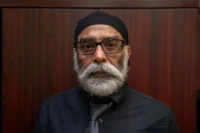Nov 30, 2021: OPEC + oil producers meet Thursday under pressure from US President Joe Biden, who has opened his country’s oil taps in hopes of lowering crude oil prices, and a new CoVID-19 variant that has complicated the equation.
According to analyst Peter Nally at the Third Bridge think tank, the meeting “is shaping up to be one of the most significant since the pandemic demand recovery began, and the key signal will be how much more oil will be added to supply to start the new year,”
Amid mounting pressure to boost production, leading members of the United States, China, India and Japan announced last week that they would increase their strategic reserves to help bring crude oil prices down. After the increase which threatened economic recovery.
Biden called it a “major initiative”, with analysts estimating the injection to be between 65 and 80 million barrels, including 50 million from the United States alone. But the move did not have the desired effect, as the price increase showed- which was itself followed by a drop in the price thanks to the emergence of Omicron variant of the Covid-19.
The discovery of the new variant on Thursday brought crude oil prices down more than 10 percent, the first time since the April 2020 drop.
According to Casrten Fritsch of CommerzBank, in an effort to maintain the current price of $70 a barrel, Carsten Fritsch of Commerzbank said “there is much to suggest that OPEC+ will not initially step up its oil production any further”
Such a decision is consistent with the cautious approach since OPEC + countries have begun to gradually increase supply. Saudi Energy Minister Prince Abdulaziz bin Salman warned against complacency in late October. The group said earlier this month that it planned to increase production by 400,000 barrels per day in December, despite there being even more maneuver room.
Russia’s Deputy Prime Minister Alexander Novak, the Kremlin’s oil pointman, warned on Monday against “hasty decisions,” according to Russian news agencies.
Novak said a technical meeting was scheduled for Tuesday before the summit but was postponed until Thursday because experts were seeking more information on the “current situation”.
Iran’s possible rejoining OPEC will be another important factor in the supply calculation. Iran was sidelined from OPEC in 2018, when then-US President Donald Trump pulled Washington out of the 2015 nuclear deal with the Islamic Republic. After a five-month hiatus, talks resumed in Vienna on Monday.
Although most analysts are not hopeful about the outcomes of the meet, Bjarne Schieldrop, of the Swedish bank SEB, said: “Getting Iranian oil production and exports back on track is probably the best option for President Joe Biden to ease the current oil market tightness.”
In 2017, Iran produced nearly four million barrels a day, an output that dropped to around two million barrels per day last year.
Stay tuned to BaaghiTV for latest news and Updates!
Pakistan secure victory against Bangladesh in first Test match






